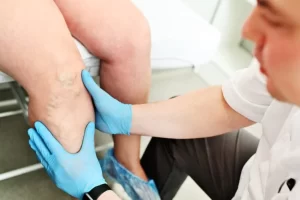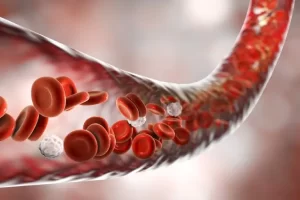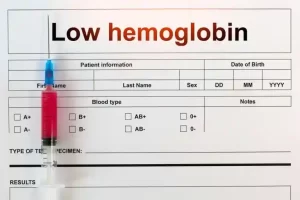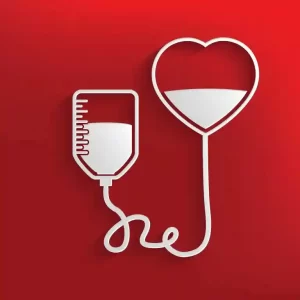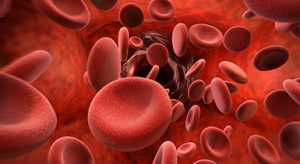What is Low Hemoglobin? Hemoglobin is the protein present in your red blood cells. The red blood cells transport oxygen throughout your body. Oxygen is your energy source, and it fuels the cells. When your body’s capacity to produce red blood cells is hampered by a disease, the hemoglobin level can decrease. Causes of Low Hemoglobin Several factors can contribute to inadequate hemoglobin amounts, including: Symptoms of Low Haemoglobin The severity and etiology of anemia influence its symptoms. A patient may initially have no symptoms from anemia due to its mildness. On the other hand, when the anemia worsens, symptoms of low haemoglobin often start to appear. Anemia symptoms may be concealed by another illness if that illness is the source of the anemia. Among the possible signs of anemia are: Treatment of Low Haemoglobin Your anemia type will determine how you are treated. Following are the common treatment of low haemoglobin: Diseases Associated with Low Hemoglobin Diseases and conditions that cause your body to produce fewer red blood cells than normal include: Diseases and conditions that cause your body to destroy red blood cells faster than they can be made include: What are Causes of Bleeding Loss? 1) Haemoglobin: A low haemoglobin result indicates anaemia which can have many causes including pregnancy, blood loss, liver damage, iron deficiency and much more. Haematology is a branch in medicine that is concerned in analysing various blood components and blood forming organs (bone marrow, spleen and lymphoid tissues). The speciality is a tool used in treating blood diseases from anaemia to the blood (leukaemia), lymphoid glands (lymphoma and myeloma) and abnormalities of blood coagulation. Wockhardt hospital offer the most advanced diagnostic technologies and treatments available for blood disorders .The department of haematology at Wockhardt is the branch of medicine concerned with the study, diagnosis, treatment, and prevention of diseases related to the blood. At Wockhardt Hospital the speciality is fully equipped in diagnosing the various different types of blood conditions that are looked at include anaemia, thalassemia, haemophilia, general blood clots , bleeding disorders, haematological malignancies such as lymphoma and leukaemia (cancers) as well. At our centres, we have essentially a team of highly trained specialists, nurse clinicians, physical and occupational therapists who are all equipped to provide patients with care in the field of Haematology. We use the latest in pharmaceuticals and leading-edge technologies to help you win over diseases and live a normal life. FAQs on Low Hemoglobin Q. At what level is hemoglobin dangerously low? Hemoglobin levels below 7 g/dL are considered dangerously low. Below this threshold, individuals may experience severe symptoms and require medical intervention to prevent complications. Q. How do you treat low hemoglobin? Treatment for low hemoglobin typically involves iron supplementation, dietary adjustments to include iron-rich foods, and addressing underlying conditions such as chronic diseases or blood loss. In severe cases, blood transfusions or erythropoietin injections may be necessary to replenish hemoglobin levels effectively. Regular monitoring and follow-up appointments help ensure the effectiveness of treatment. Q. Is hemoglobin 7.5 Low? Hemoglobin levels of 7.5 grams per deciliter are considered low and may indicate anemia. However, the severity of symptoms and need for treatment depend on individual health factors and underlying condition Q. How serious is a hemoglobin of 7? Hemoglobin levels below 7 g/dL are deemed severely low and can cause severe symptoms including weakness, exhaustion, and dyspnea. To treat this disease and avoid consequences, immediate medical intervention is usually necessary. Q. What if hemoglobin is less than 8? If hemoglobin is less than 8 g/dL, it’s indicative of anemia and may cause symptoms like fatigue and weakness. Medical evaluation is necessary to determine the underlying cause and appropriate treatment, which may include iron supplementation or addressing any contributing health conditions. Severe cases may require interventions, such as blood transfusions to raise hemoglobin levels.
